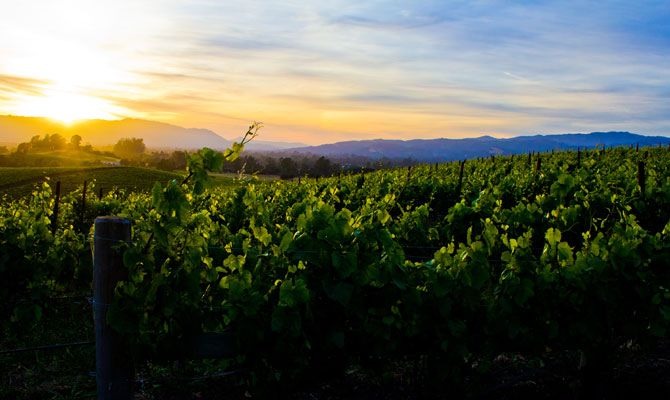Dry-Farming: Water From The Sky
This is one in a series of stories; visit The Daily Meal Special Report: Water for more.
Right now, the state of California is enduring what is reported to be its longest drought in more than 500 years. In its face, the state's produce growers, who use as much as 80 percent of California's water, are increasingly turning to the millennia-old practice of dry farming, which utilizes water stored in soil to grow the crops during the dry season, rather than the "artificial" application of water through irrigation. Producers essentially starve their crops of water during the dry season.
It sounds harsh, and indeed the application of dry farming to wine growing is sometimes characterized "the suffering of the vine." But the harsh conditions, according to farmers who already implement the technique, are known to yield some of the best produce they've ever tasted. "I found I could produce an exceptionally flavorful tomato that required very little water input," explains Kevin McEnnis of Quetzal Farms in California's Sonoma County. "Dry-farmed crops usually experience some moisture stress. The benefits of this stress are best seen in sugary fruits such as tomatoes and grapes, where the stress causes the plant to produce smaller, more intensely flavored, and sweeter fruit."
Not all crops are up to the challenge, McEnnis adds. "Our region has seen dry-farmed apples almost disappear," he notes, "because they cannot compete with [those grown with] the modern irrigated systems in Washington that use far less labor."
Dry-farming has obvious financial repercussions. "My tomato production is about two tons to the acre, probably about one fifth of the production of irrigated fresh market tomatoes," says McEnnis, "and almost no yield compared to the 40 tons to the acre that are common in California processing tomatoes."
Although dry-farmed fruit is denser and stores better, it is also smaller, while the commercial fruit industry "has spent many decades developing standards for large, blemish-free fruit," reports California's Agricultural Water Stewardship Initiative. "Supermarkets demand large fruit because they sell it by the pound and they want to force the customer to buy as much as possible. It would take a significant marketing effort to create a price premium for dry-farmed fruit that could balance out the yield loss."
Will Bucklin, a winemaker at Old Hill Ranch in the Sonoma Valley, has been dry-farming for the last 15 years. In that time, Bucklin estimates he has saved 10 million gallons of irreplaceable ground water. "We dry farm for several reasons: better grapes, water conservation, increase in vine health and life expectancy, better resistance to pests, and less work." Nonetheless, he sees dry-farming declining, at least in his industry. "In the last year alone I see more and more vineyards that were previously dry-farmed convert to irrigation," says Bucklin. "I suspect that 90 percent of vineyards in California are irrigated. Obviously, there are many who think it is a superior way to farm. I do not agree." One issue is that dry-farming means that the crops are slower to come into production. A newly planted dry-farmed vineyard can take up to five years to begin producing.[pullquote:left]
Bucklin likes to point out that the widespread use of irrigation in California is relatively new. "I usually start this conversation," he says, "with the reminder that until just a few decades ago, almost all agriculture was dry-farmed. We did not have access to water the way we do now. Like so many things, it is back to the future."
Indeed, the practice of dry farming is thousands of years old, and has been utilized with great success in Mediterranean countries and later in the American west. In California, where the climate is Mediterranean (rainfall occurs during the winter, and then June through October is normally completely dry), the technique is particularly useful. "The trick is keeping the moisture in the soil," says Bucklin. "The soil is our bank. We treat it well."
The now widespread practice of irrigation has put many California farmers at odds with the sustainability needs of the state. To them, the financial hardship that comes with lower yields may outweigh the long-term goals of conservation. For Bucklin, whose dry-farmed yields, he says, are comparable with those of irrigated blocks, the focus is on protecting the soil, not producing the maximum output. "Agriculture is never perfect," he says, "and dry farming is no exception, but the current irrigation paradigm seems short-sighted, especially in the context of this amazing drought."
